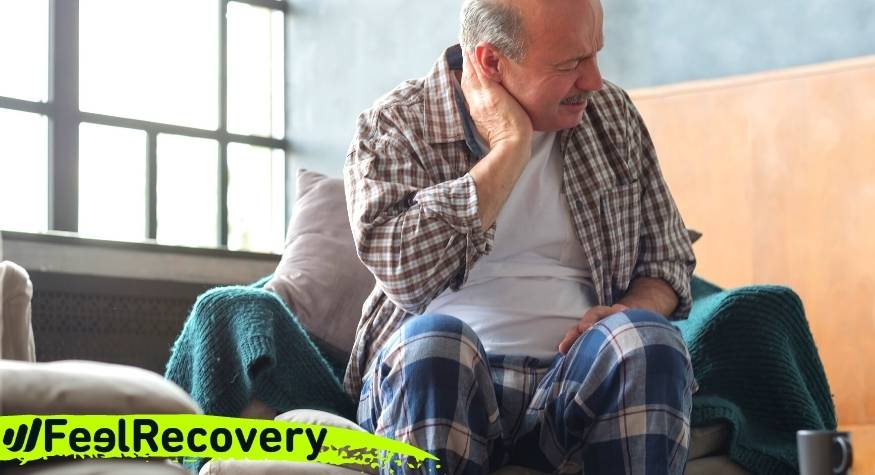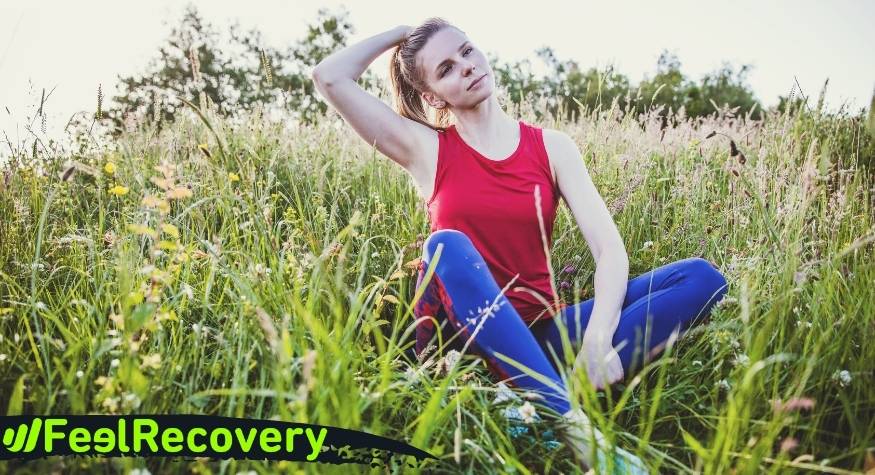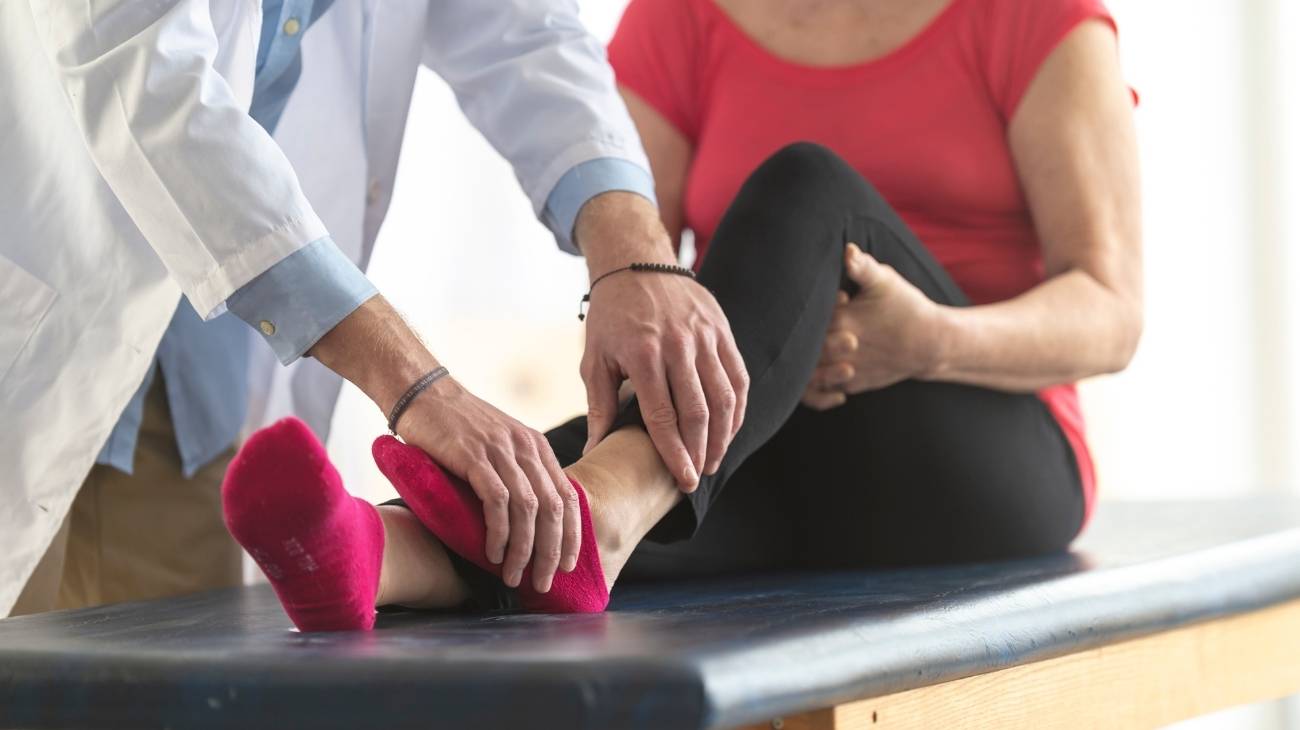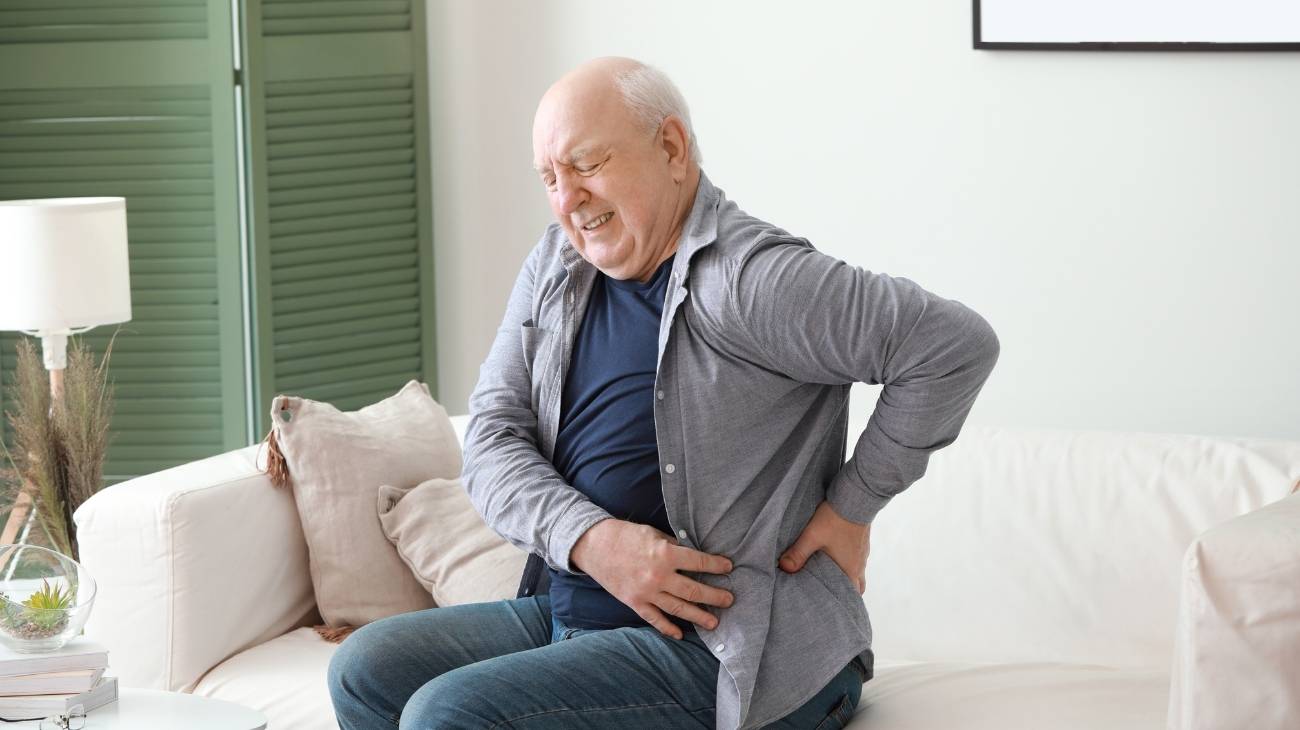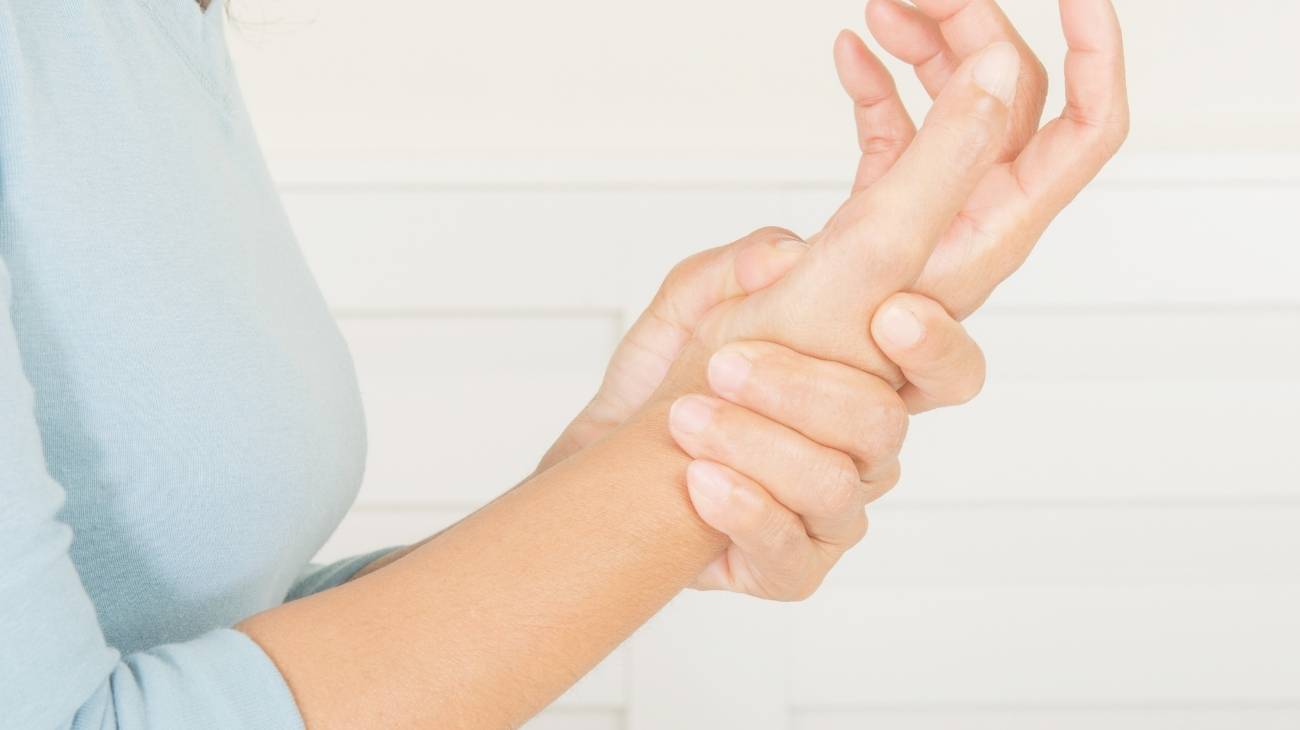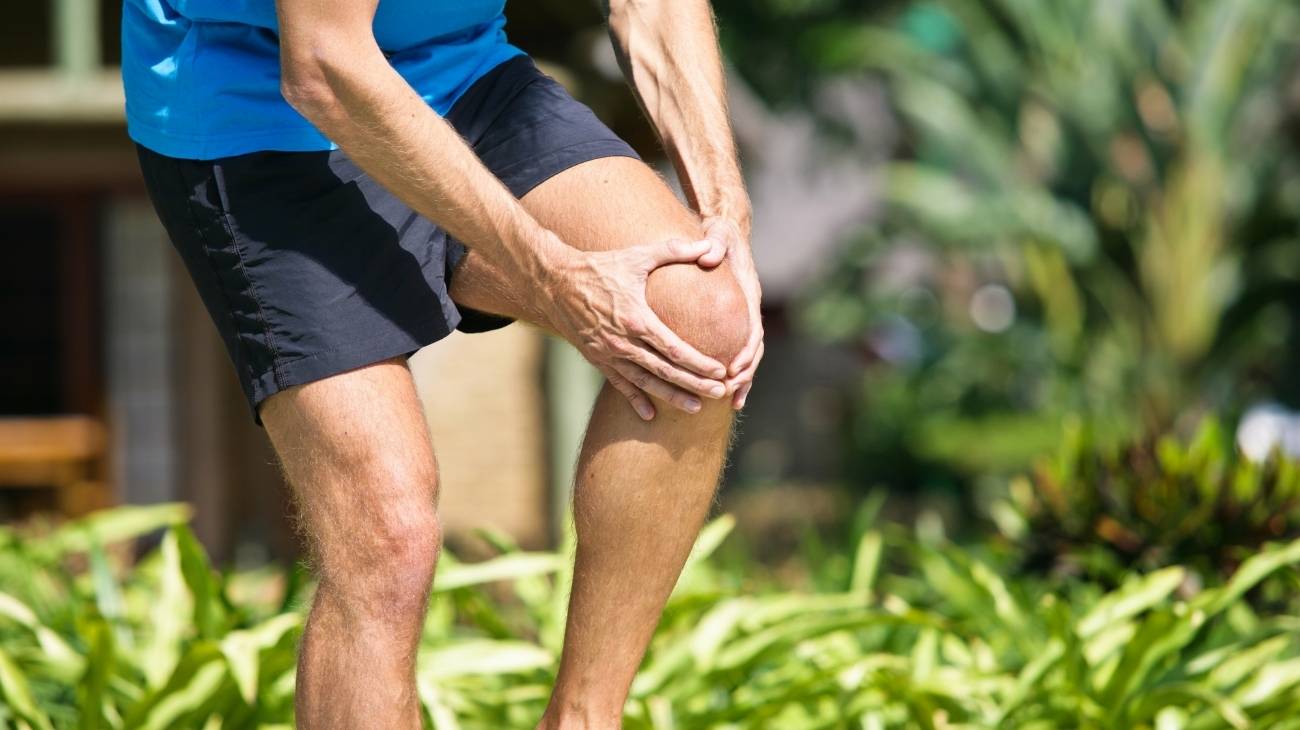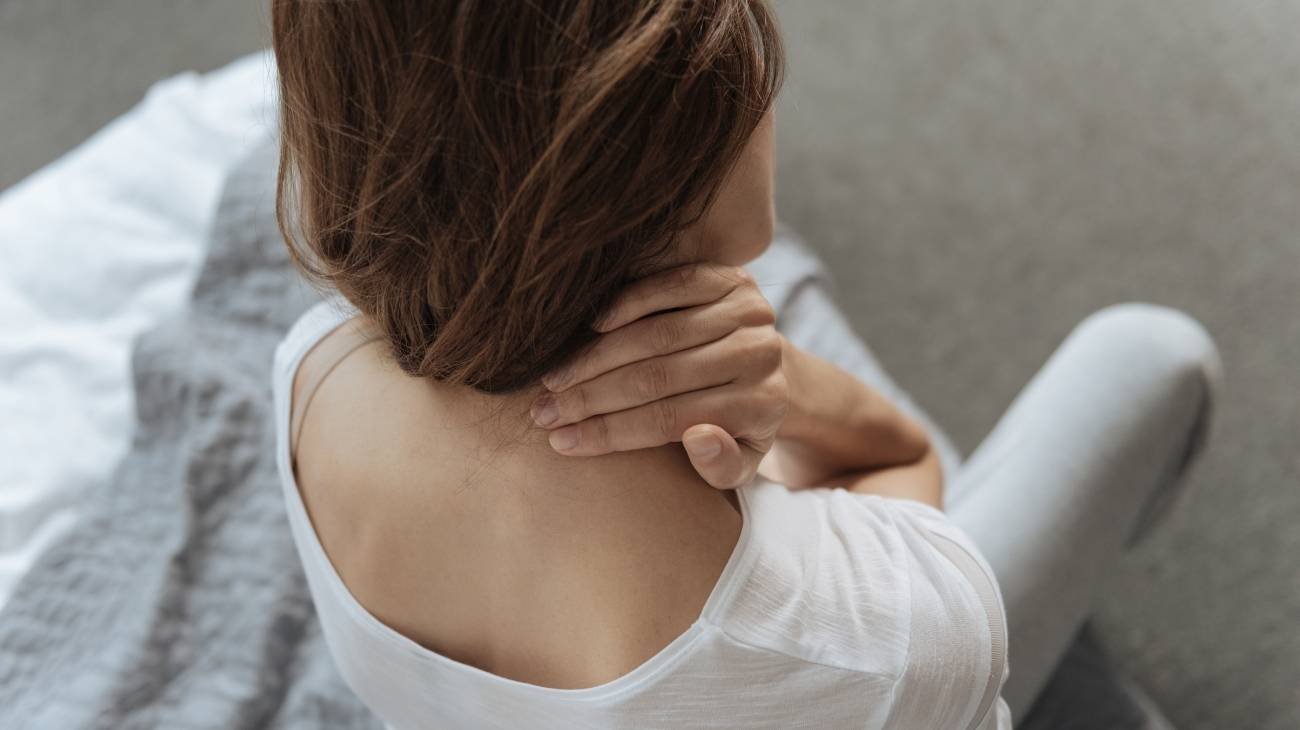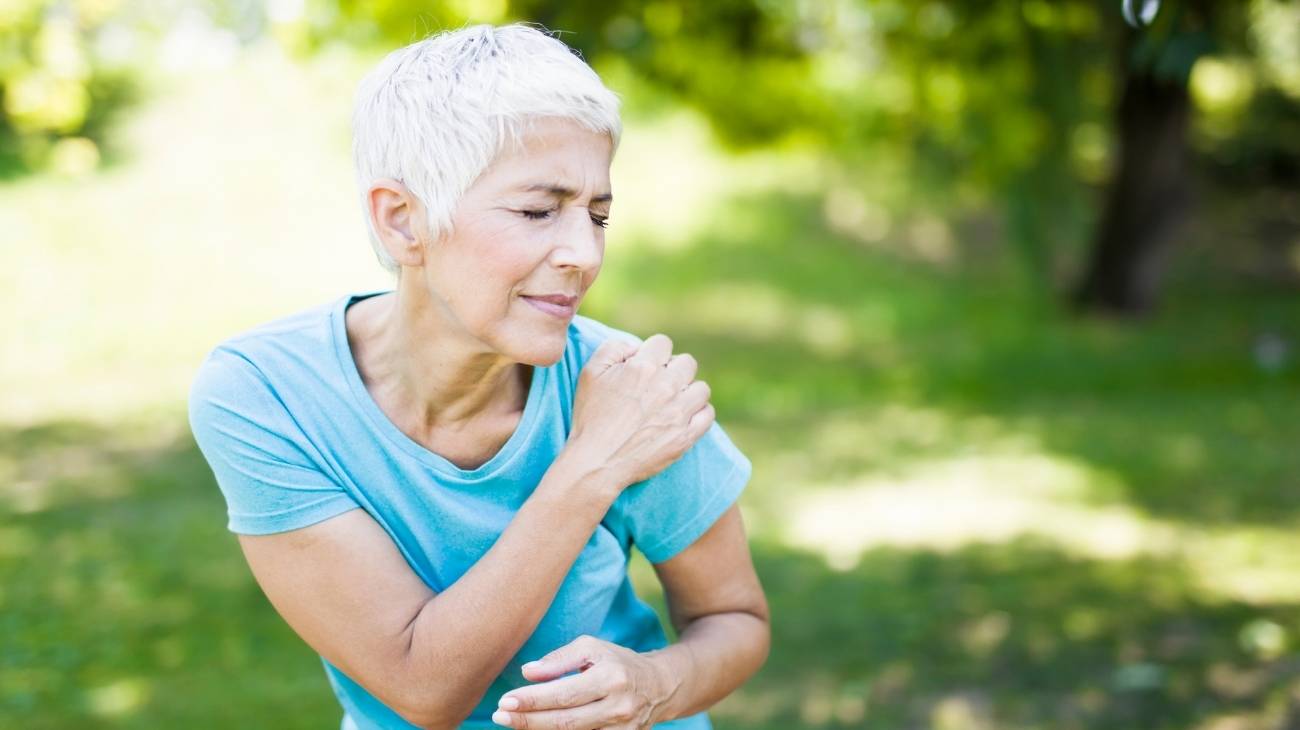- What is cervical or neck arthritis?
- What are the causes and risk factors for cervical osteoarthritis?
- Best products for neck arthritis
- Main symptoms that warn us that we have arthritis in the neck
- What treatments are available to improve the symptoms of osteoarthritis in the neck?
- Which prevention methods for cervical osteoarthritis are the most effective?
In the following paragraphs you will find all the information related to cervical or neck osteoarthritis. We will show you in detail what this disease is and what are the causes and risk factors that increase the likelihood of cervical osteoarthritis. You will also learn the main symptoms and signs that will warn you of the presence of this pathology.
Don't miss anything because you can read about the treatments currently available to improve the symptoms of osteoarthritis of the neck. Finally, you will find a list of all the prevention methods you should bear in mind. Have a look at it.
What is cervical or neck arthritis?
The 7 vertebrae that make up the cervical spine are located in the highest part of the spine and are responsible, among other things, for moving the head in different positions. Between the union of these vertebrae it is possible to find a cartilage which, when it wears out, produces cervical osteoarthritis or neck arthritis. Degeneration of the intervertebral discs allows the space between them to become smaller, causing new bones to appear outside the normal limits.
Cervicalgia, or pain in the neck, is one of the most common symptoms of this pathology, but this is due not to the wear and tear of the cartilage but to the inflammation of the nerves, muscles and tendons in the area. It should be borne in mind that the cervical spine is responsible for transporting the central nervous system to the brain, so all the nerves that pass through this area of the body are affected by osteoarthritis of the neck.
What are the causes and risk factors for cervical osteoarthritis?
The causes and risk factors of osteoarthritis of the neck are all those elements produced by the organism itself or by the environment surrounding the patient that increase the probability of contracting cervical osteoarthritis.
We will show you below the variables that you must take into account to avoid this pathology:
- Congenital malformation: If the patient was born with a deformity in the cervical spine, as time goes by this area of the body will struggle to do its job. This causes increased wear and tear on the articular cartilage.
- Previous trauma: causing osteoarthritis to be considered a secondary consequence of the first pathology. This is commonly found in people with a sedentary lifestyle or who carry out activities that are risky for their health.
- Age: people between 30 and 50 years of age are more likely to contract cervicoarthrosis.
- Hereditary factors: While the exact causes of osteoarthritis of the neck are unclear, genetics is likely to be a risk factor for the condition. Therefore, it is necessary to be vigilant and seek medical advice when a person has parents or siblings who suffer from this pathology.
- Bad posture: People who spend a lot of time with a tense neck and few hours resting can cause cervical osteoarthritis due to the effort made by the cervical spine to maintain the necessary head movements. Stress increases this factor.
- Nerve impingement: This can also be a cause of cervical osteoarthritis because the patient unconsciously places the head in an abnormal position to mitigate the pain, thus generating a bad posture.
- Inflammatory diseases: Septic and rheumatoid arthritis can cause inflammation and swelling in the joint, leading to increased wear and tear of the articular cartilage and thus to osteoarthritis of the neck.
- Hyperthyroidism: infections of the pancreas and high blood glucose are also considered risk factors for cervical osteoarthritis.
Best products for neck arthritis
Bestseller
-
Microwave Wheat Bag for Neck & Shoulder Pain Relief (Hearts)
£24,95 -
Microwave Wheat Bag for Neck & Shoulder Pain Relief (Oxford)
£24,95 -
Microwave Wheat Bag for Neck & Shoulder Pain Relief (Sport)
£24,95 -
Microwave Wheat Bag for Neck Pain Relief (Hearts)
£20,95 -
Microwave Wheat Bag for Neck Pain Relief (Oxford)
£20,95 -
Microwave Wheat Bag for Neck Pain Relief (Sport)
£20,95 -
Microwaveable Wheat Bag for Pain Relief (Hearts)
£20,95 -
Microwaveable Wheat Bag for Pain Relief (Oxford)
£20,95
Main symptoms that warn us that we have arthritis in the neck
See below for the main signs and symptoms that may indicate the presence of cervical osteoarthritis:
- Neck pain: Cervical pain can have different levels of intensity. For example, a patient may suffer from sporadic pain that disappears after a few days, but as time goes by, this symptomatology becomes more frequent and lasts much longer.
- Momentary stiffness of the affected area: Like the pain, the muscles become stiff for a certain period of time and disappear with massage and slight movements. As the disease progresses, the intensity and occurrence of this symptom becomes more frequent.
- Neck movements with pain: If the cervical pain appears when the patient moves the cervical spine and disappears when the patient is still, causing limited movement, it is likely that there is osteoarthritis in the area.
- Numbness in the upper limbs and shoulders: This may be caused by loss of muscle strength or because a vertebra compresses a specific nerve.
What treatments are available to improve the symptoms of osteoarthritis in the neck?
There are different types of treatment that your doctor can prescribe to improve the symptoms of osteoarthritis of the neck. We will show you below the conventional therapies and alternative methods for dealing with this pathology.
Alternative and complementary therapies
This type of treatment is a technique used as a complement to drug therapy which improves the joint through movement, stretching and relaxation.
There are a number of alternatives that you can choose from after consulting with your doctor:
- Hot and cold therapy: by means of ice packs and hot water it is possible to place these elements alternately on the cervical spine area for a period of no more than 20 minutes. This causes relaxation of the muscles, deflation of the joint and an increased sense of wellbeing. To use this complementary technique, prior consultation with the doctor is necessary to avoid injury to the cartilage and skin.
- Compression therapy: In this therapy, a soft or semi-soft collar can be used to improve the blood velocity, depending on the progression of the neck arthritis. This method also serves to fix the movements of the cervical vertebrae and to align the body with the head, thus preventing the joint from malfunctioning and the cartilage from wearing out faster.
- Massage therapy: Both self-massage and massage by professional masseurs help to reduce the pain of cervical osteoarthritis by stimulating the muscles in the affected area. This allows the body to generate endorphins, which work as painkillers and help to reduce the tightness in the joint. It also strengthens the cervical muscles.
- Acupressure therapy: Like acupuncture, acupressure therapy is a complementary treatment based on Chinese medicine, which involves pressing certain areas of the body with the thumbs and the rest of the hand. This stimulates the immune system and nerves to produce relief in the neck, thus improving neck movement and reducing joint inflammation.
- Thermotherapy: This alternative therapy seeks to block nerve stimulation through the application of heat. In this way, certain information is sent to the brain, which acts on the central nervous system, causing a sensation of pain, increasing well-being and reducing muscle stiffness.
- Natural remedies using plants: Medicinal plants can be used as a complementary method to traditional therapy and also as an alternative treatment, as in the case of massages. This technique is based on ingesting infusions of herbs that can be found in nature. To reduce cervical pain, it is possible to take milk thistle, orange blossom, green nettle, valerian extract, dandelion, peppermint and lime blossom, but you should bear in mind that before using this technique you should consult your doctor. The herbs produce stimulations in the body that help to reduce pain, joint inflammation and improve the patient's night's rest.
- Ultrasound: A large number of high-frequency sound waves per second are sent by means of electronic devices. This serves to stimulate nerves and assist other therapies that may be being implemented in parallel, for example physiotherapy. It has thermal effects, so it controls the reception of pain in the brain.
- Meditation and relaxation: Meditation is an ancient technique that works very well for people with osteoarthritis of the neck. The aim of this therapy is the mental balance of the patient to relax and avoid severe numbness in the cervical area. Through breathing techniques, which can be practised anywhere, the patient manages the pain and understands the disease process.
- Aromatherapy: Aromatherapy is a method that aims to relax the patient in times of pain. Different techniques are used for this, but the most popular is to moisten a handkerchief with the aroma of citrus fruits, vanilla, mint and ginger, among others. When the patient begins to feel pain, the handkerchief should be held to the mouth and nose for a few minutes to produce a relaxing effect. Candles and other room-fragrancing devices can also be used.
- Acupuncture: Chinese medicine is used to insert needles into certain areas of the patient's skin. This produces, through stimulation of tissues and organs, the reduction of pain and numbness causing relief in the synovial joint. For this practice it is necessary to use a professional practitioner with the prior consent of the rheumatologist.
- Biofeedback: is a technique used to inform the patient how the body reacts to the pain of osteoarthritis of the neck. In this way it is possible to teach the patient different methods that will help him/her to relax in order to avoid further cervical pain. It is feasible to accompany this treatment with other rehabilitative approaches such as meditation and massage.
- Healthy lifestyle habits: the aim of this therapy is for the patient to maintain a balanced and healthy diet with the inclusion of omega-3, fibre, dairy products, fruit and vegetables rich in vitamin C, which will help to reduce the tension and pain in the cervical spine. In addition to this, the complementary treatment seeks to incorporate daily physical exercises that will help to avoid obesity. On the other hand, it teaches the correct postures to align the neck with the body to avoid cervicalgia.
Dietary supplements
The food consumed by a patient with cervical osteoarthritis must be low in sugars, purines and uric acid, but if this is not sufficient, it must be supplemented with food supplements. In this way, by means of tablets and syrups, the patient ingests vitamins, minerals and other nutrients that are lacking in the body.
Physiotherapy treatments
By means of exercises controlled by physiotherapists, it is possible to correct the posture of the neck to improve the alignment with the spine and thus strengthen the muscles involved. This will allow the head to have more natural movements and the patient to obtain a better posture, avoiding tension and stiffening of the joints.
Medications
The most important thing to know is that the medication you take must be prescribed by a doctor. So you should never self-medicate because it could lead to consequences and more severe neck injuries.
The pharmacological therapy used in this pathology is based on opioid analgesics and anti-inflammatory drugs. Although, in less severe cases, muscle relaxants with vitamin B12 are used. It is also possible to inject corticosteroids directly into the neck to reduce pain and stiffness in advanced osteoarthritis.
Surgery
When there is cartilage degeneration or advanced wear of the cartilage, surgery is necessary, which is successful in almost 80% of cases. However, it should be noted that this treatment is only diagnosed in less than 1% of patients.
Which prevention methods for cervical osteoarthritis are the most effective?
Learn about all the methods you can use to prevent cervical osteoarthritis:
- Sleep with a proper posture: You should place the pillow in such a way that the muscles in the cervical area are not stretched too much, thus aligning the neck and head with the body, causing a better rest and avoiding contractures.
- Don't hold your mobile phone with your shoulder when talking on the phone: This causes a disproportionate elongation of one part of the neck, which can lead to future injuries.
- Don't carry heavy luggage on one shoulder: If you need to carry a backpack or heavy bag, try to lift it in a coordinated way so that you don't strain your neck. Also, avoid carrying heavy things on your back for long periods of time.
- Do neck exercises and stretching: Try to regularly stretch all the muscles in the joint, but you should consult your doctor or physiotherapist about the best movements for you. This could have serious consequences if you don't do it correctly.
- Try to align your head with your body at all times: You should learn to maintain good posture throughout your work or study day. This will prevent neck pain significantly.
If you work long hours in front of a computer: place the screen at eye level. - Eat healthy: A balanced diet is a key factor in preventing osteoarthritis of the neck. You should incorporate foods rich in vitamin C, Omega 3, 4 and 6, vegetables, fruit and eat more selenium and fibre. Hydration is also very important to avoid cervical osteoarthritis.
- Don't drink alcohol or smoke: Smoking and alcoholism are direct causes of osteoarthritis of the neck, so avoiding these intakes will help you a lot to avoid the disease.
References
- Field, T., Diego, M., Gonzalez, G., & Funk, C. G. (2014). Neck arthritis pain is reduced and range of motion is increased by massage therapy. Complementary therapies in clinical practice, 20(4), 219-223. https://www.sciencedirect.com/science/article/abs/pii/S1744388114000620
- Hirsh, L. F. (1983). Cervical degenerative arthritis: Possible cause of neck and arm pain. Postgraduate Medicine, 74(1), 123-130. https://www.tandfonline.com/doi/abs/10.1080/00325481.1983.11697906
- Bodakçi, E., Üsküdar Cansu, D., Ertürk, A., Çalişir, C., & Korkmaz, C. (2018). Can neck pain be an initial symptom of rheumatoid arthritis? A case report and literature review. Rheumatology international, 38, 925-931. https://link.springer.com/article/10.1007/s00296-018-4019-z
- Nguyen, H. V., Ludwig, S. C., Silber, J., Gelb, D. E., Anderson, P. A., Frank, L., & Vaccaro, A. R. (2004). Rheumatoid arthritis of the cervical spine. The Spine Journal, 4(3), 329-334. https://www.sciencedirect.com/science/article/abs/pii/S1529943003005552
- Dreyer, S. J., & Boden, S. D. (1999). Natural history of rheumatoid arthritis of the cervical spine. Clinical Orthopaedics and Related Research®, 366, 98-106. https://journals.lww.com/clinorthop/Fulltext/1999/09000/Natural_History_of_Rheumatoid_Arthritis_of_the.13.aspx
- Sibley, J. T. (1985). Weather and arthritis symptoms. The Journal of Rheumatology, 12(4), 707-710. https://europepmc.org/article/med/4057192
- SCHAIBLE, H. G., Ebersberger, A., & Von Banchet, G. S. (2002). Mechanisms of pain in arthritis. Annals of the New York Academy of Sciences, 966(1), 343-354. https://nyaspubs.onlinelibrary.wiley.com/doi/abs/10.1111/j.1749-6632.2002.tb04234.x
- Smolen, J. S., Aletaha, D., Koeller, M., Weisman, M. H., & Emery, P. (2007). New therapies for treatment of rheumatoid arthritis. The lancet, 370(9602), 1861-1874. https://www.sciencedirect.com/science/article/abs/pii/S0140673607607843
- Burmester, G. R., & Pope, J. E. (2017). Novel treatment strategies in rheumatoid arthritis. The Lancet, 389(10086), 2338-2348. https://www.sciencedirect.com/science/article/abs/pii/S0140673617314915
- Majithia, V., & Geraci, S. A. (2007). Rheumatoid arthritis: diagnosis and management. The American journal of medicine, 120(11), 936-939. https://www.sciencedirect.com/science/article/abs/pii/S0002934307003610

































